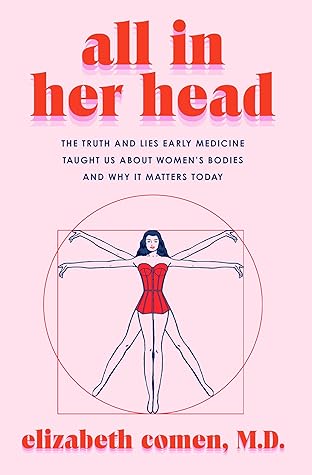More on this book
Community
Kindle Notes & Highlights
Read between
April 22 - July 7, 2025
Today we find a similar entanglement of health status with wealth status, of medical wisdom with pseudoscientific quackery and fad dieting, and of a struggle for control over women’s lives that begins with controlling their appetites.
“What I wish to emphasize is that there is no problem of ‘mind’ versus ‘body,’ because biologically no such dichotomy can be made,” he wrote in 1943. “The dichotomy is an artefact; there is no truth in it, and the discussion has no place in science in 1943
Making women masters of the domestic realm was a double-edged sword that also served to confine them: to keep house, you had to stay home. Meanwhile, the conflation of good health and proper hygiene with elite social class continued apace: a tidy house didn’t just denote the upstanding moral character of the woman who lived there but elevated her and her family above the poor, nonwhite, and immigrant communities, who didn’t even have ceramic toilets, let alone the time and money to devote to keeping them clean.
Having concluded that women in general, and prostitutes in particular, were responsible for the spread of venereal diseases, doctors began looking for ways to identify them—that is, the women, not the diseases.
In theory, the law allowed the detention of any person, irrespective of sex, who was suspected of spreading disease; in practice, virtually all those impacted were women. The specter of the “foul woman” reared its head once again, this time with the imprimatur of both medical authority and the state behind it.
What Parran could do, and did, was institutionalize the mistrust of women within the public health system. Under his watch, a powerful and toxic idea wove its way into the fabric of government, of medicine, and of American society: when it came to the spread of disease, women were always to blame, and never to be trusted—not with their freedom, not with their healthcare, not even as authorities on what was happening in their own bodies.
Hysteria defined the place of women in the world, as patients and as people: the consensus was that simply having a uterus put any woman at a biological disadvantage, as the temperamental organ could not help but impact the workings of the brain.
beginning in the 1930s in Puerto Rico, nearly one-third of all women between the ages of twenty and forty-nine were forcibly sterilized as the result of a population control program supported by the US government.
in the 1970s, the Indian Health Service sterilized thousands of Native American women, nearly halving their birth rate within the next ten years.
Even now, the medical system operates from the same presupposition it always did: that a woman’s health, her happiness, and even her freedom from pain are all secondary to her biological destiny to become a mother.


